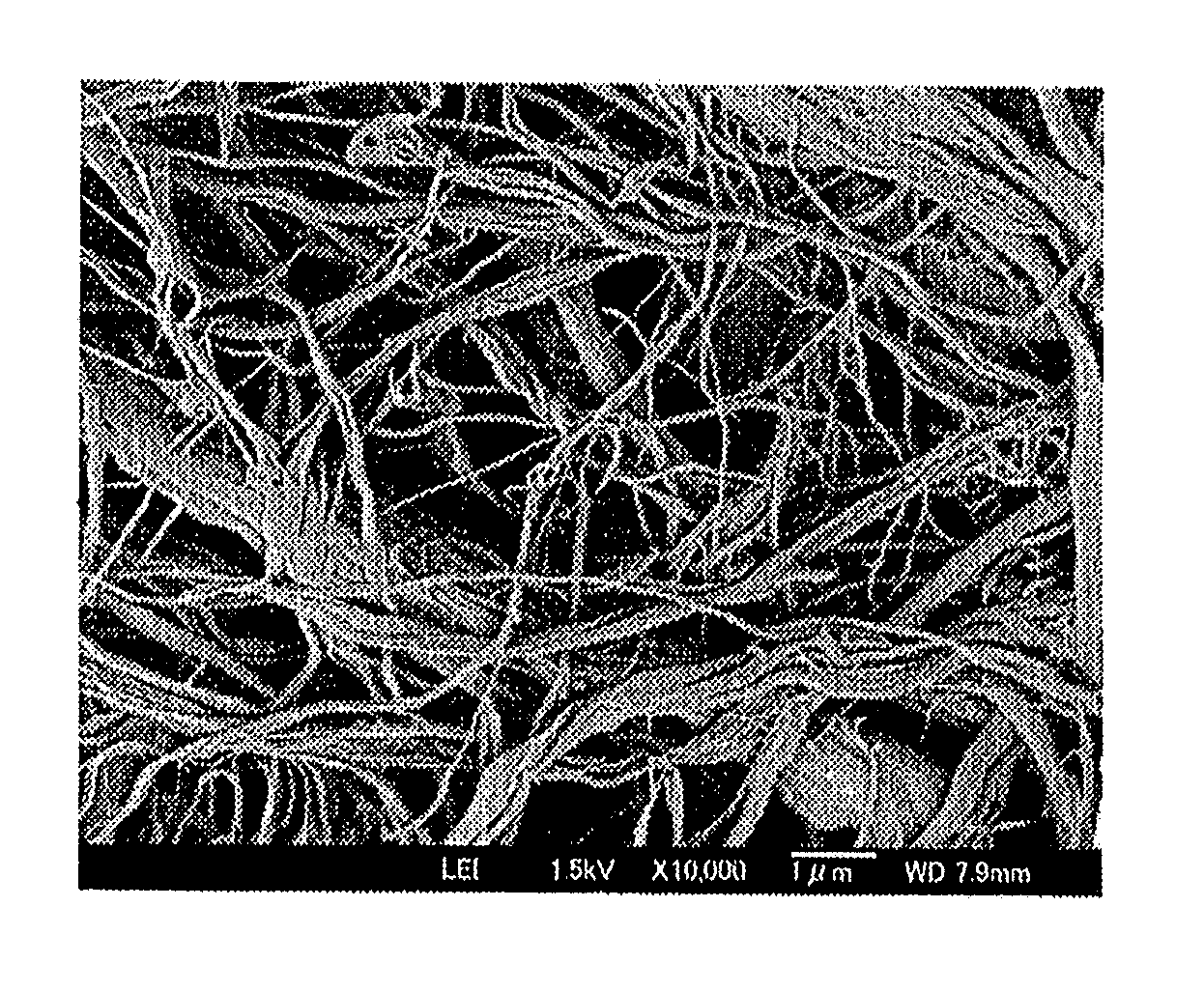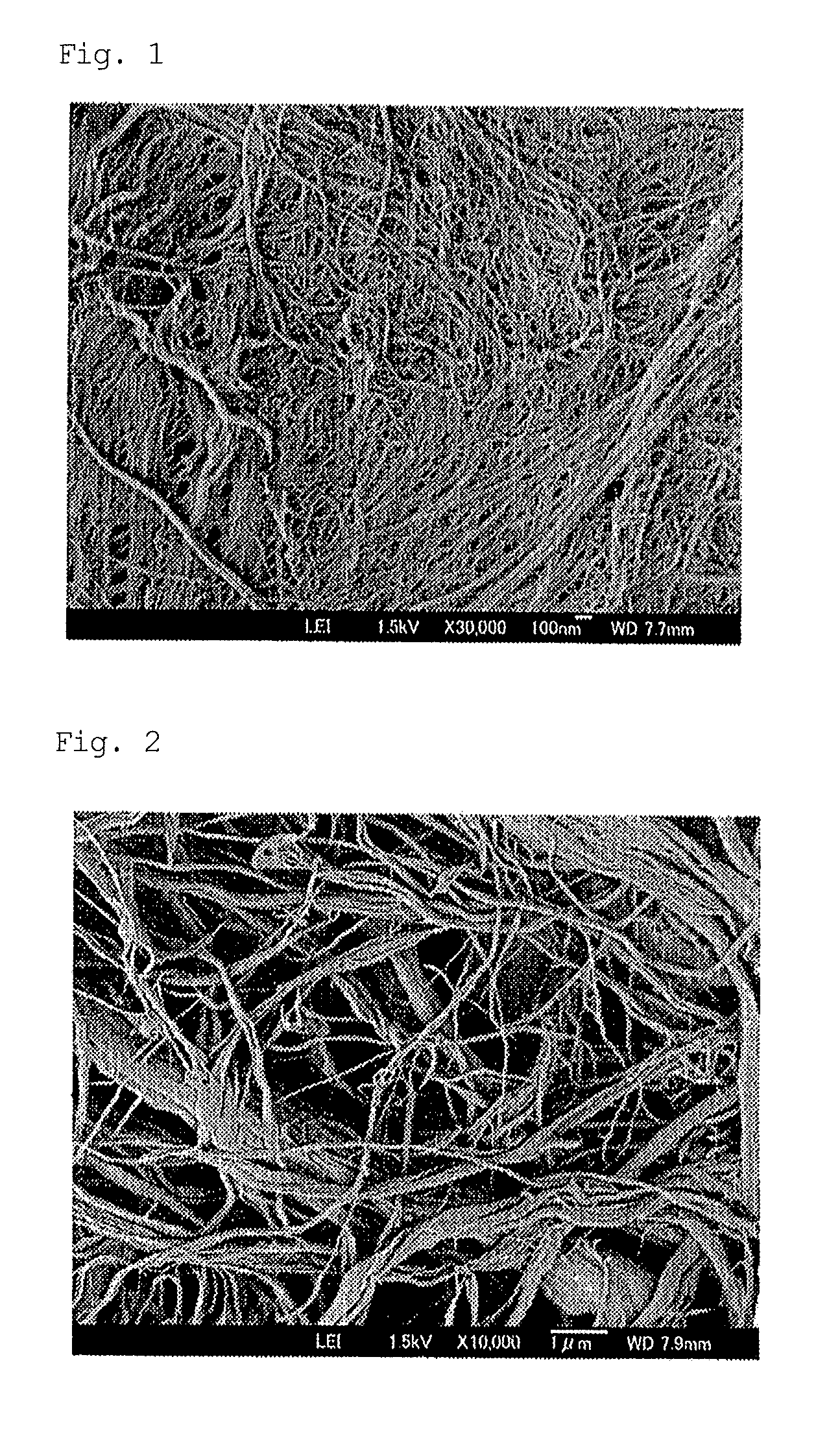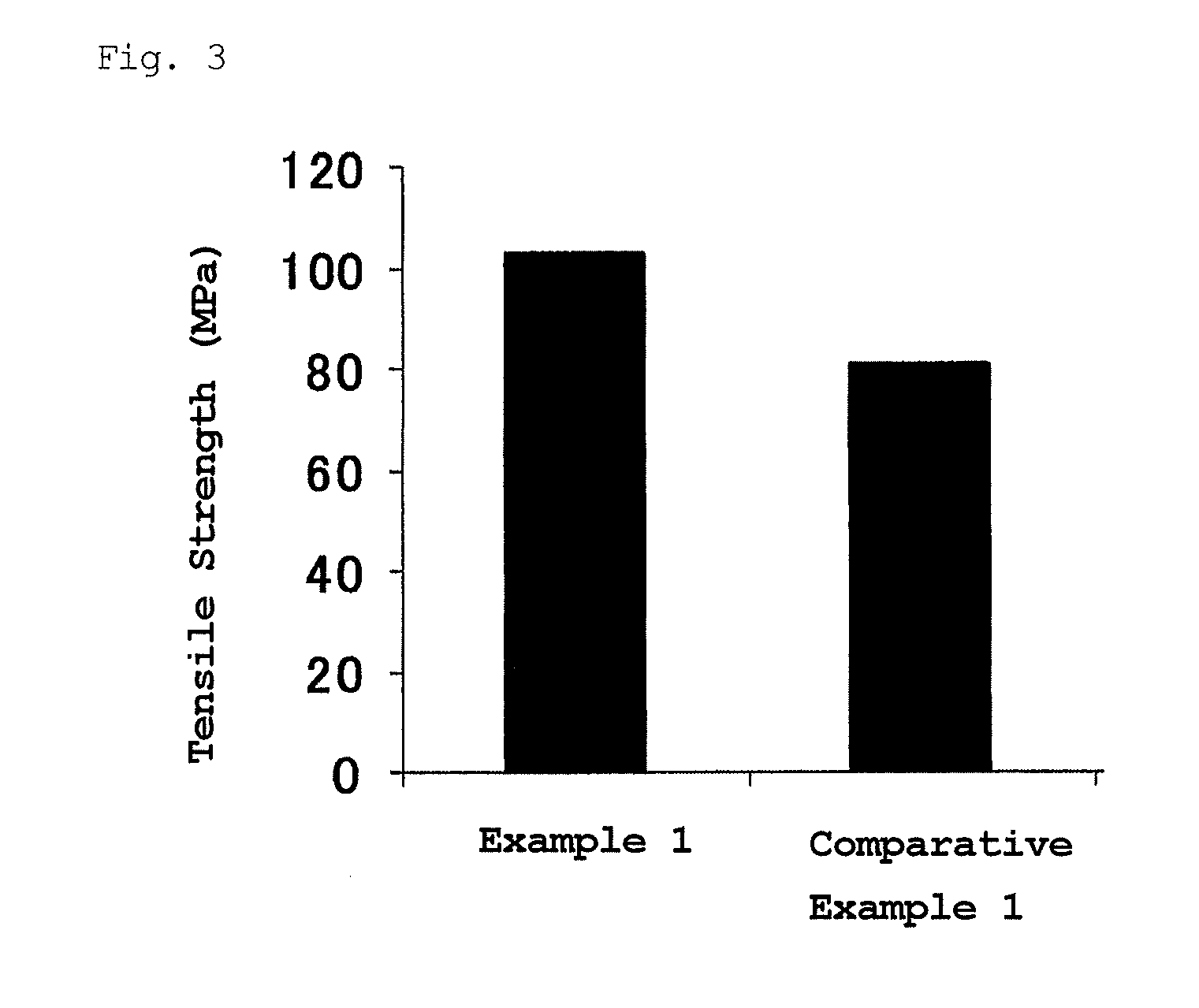Molding material and manufacturing method therefor
a manufacturing method and technology of a molding material, applied in the field of molding materials, can solve the problems of large amount of residue generated, insufficient development of intrinsic properties of microfibrillated plant fibers, heavy weight of the molding material, etc., and achieve excellent flexural modulus, excellent tensile strength, and easy deformation
- Summary
- Abstract
- Description
- Claims
- Application Information
AI Technical Summary
Benefits of technology
Problems solved by technology
Method used
Image
Examples
example 1
Preparation of Anionically Modified Pulp
[0113]A slurry of softwood bleached kraft pulp (NBKP) (an aqueous suspension with a pulp slurry concentration of 2% by weight) was passed through a single-disk refiner (produced by Kumagai Riki Kogyo Co., Ltd.) and repeatedly subjected to refiner treatment until the Canadian standard freeness (CSF) value of 100 mL or less was achieved. The obtained slurry was dehydrated and concentrated using a centrifugal dehydrator (produced by Kokusan Co., Ltd.) at 2,000 rpm for 15 minutes to a pulp concentration of 25% by weight. Subsequently, 60 parts by dry weight of the above-mentioned pulp, 150 parts by weight of sodium hydroxide, and 2,850 parts by weight of water were introduced into an IKA stirrer whose rotation number had been adjusted to 800 rpm, and the resulting mixture was stirred at 30° C. for 1 hour. Thereafter, 179 parts by weight of monochloroacetic acid on an active component basis was added thereto, and the mixture was stirred for another...
example 2
[0136]A bulky sheet of the anionically modified microfibrillated plant fiber was prepared by a method similar to that described in Example 1, except that, in “Preparation of Anionically Modified Pulp,” 22 parts by weight of sodium hydroxide, 360 parts by weight of water, and 1,080 parts by weight of 2-propanol (IPA) were used, and 26 parts by weight of monochloroacetic acid on an active component basis was added. Further, using the obtained bulky sheet, a resin composite was produced by a method similar to that described in Example 1. Table 1 shows the resin content of the obtained resin molding material, as well as the flexural modulus and the flexural strength.
example 3
[0137]A bulky sheet of the anionically modified microfibrillated plant fiber was prepared by a method similar to that described in Example 1, except that, in “Preparation of Anionically Modified Pulp,” 10.4 parts by weight of sodium hydroxide, 360 parts by weight of water, and 1,080 parts by weight of IPA were used, and 12.5 parts by weight of monochloroacetic acid on an active component basis was added. Further, using the obtained bulky sheet, a resin composite was produced by a method similar to that described in Example 1. Table 1 shows the resin content of the obtained resin molding material, as well as the flexural modulus and the flexural strength.
PUM
| Property | Measurement | Unit |
|---|---|---|
| circumferential speed | aaaaa | aaaaa |
| number average diameter | aaaaa | aaaaa |
| width | aaaaa | aaaaa |
Abstract
Description
Claims
Application Information
 Login to View More
Login to View More - R&D
- Intellectual Property
- Life Sciences
- Materials
- Tech Scout
- Unparalleled Data Quality
- Higher Quality Content
- 60% Fewer Hallucinations
Browse by: Latest US Patents, China's latest patents, Technical Efficacy Thesaurus, Application Domain, Technology Topic, Popular Technical Reports.
© 2025 PatSnap. All rights reserved.Legal|Privacy policy|Modern Slavery Act Transparency Statement|Sitemap|About US| Contact US: help@patsnap.com



